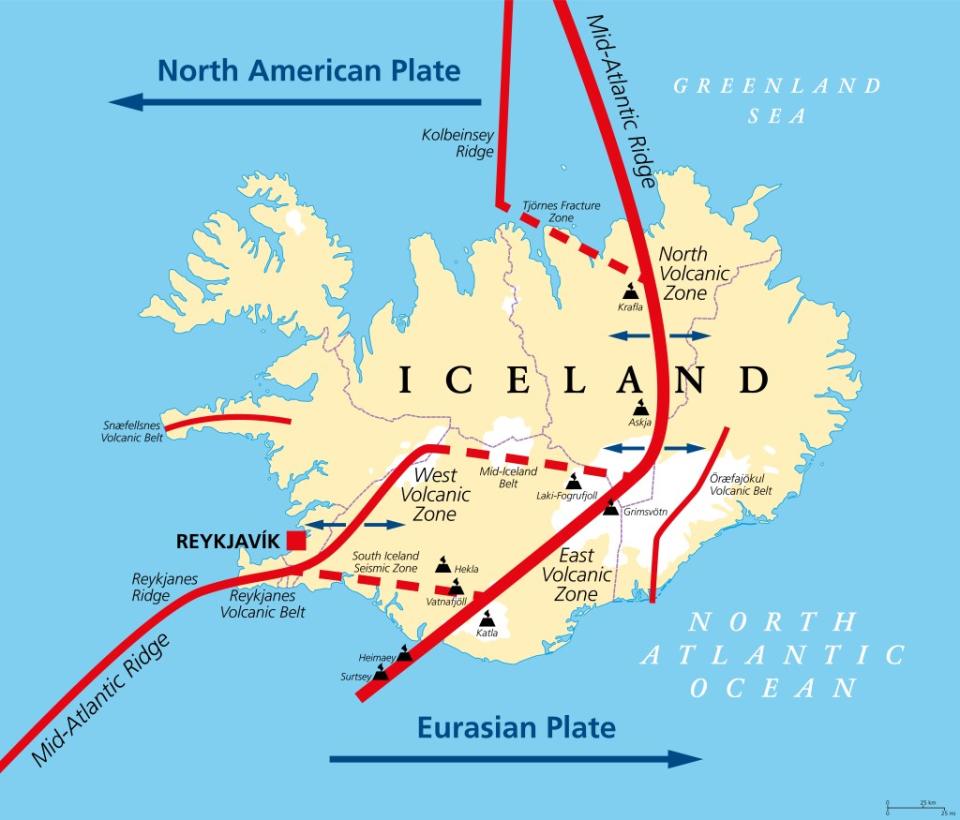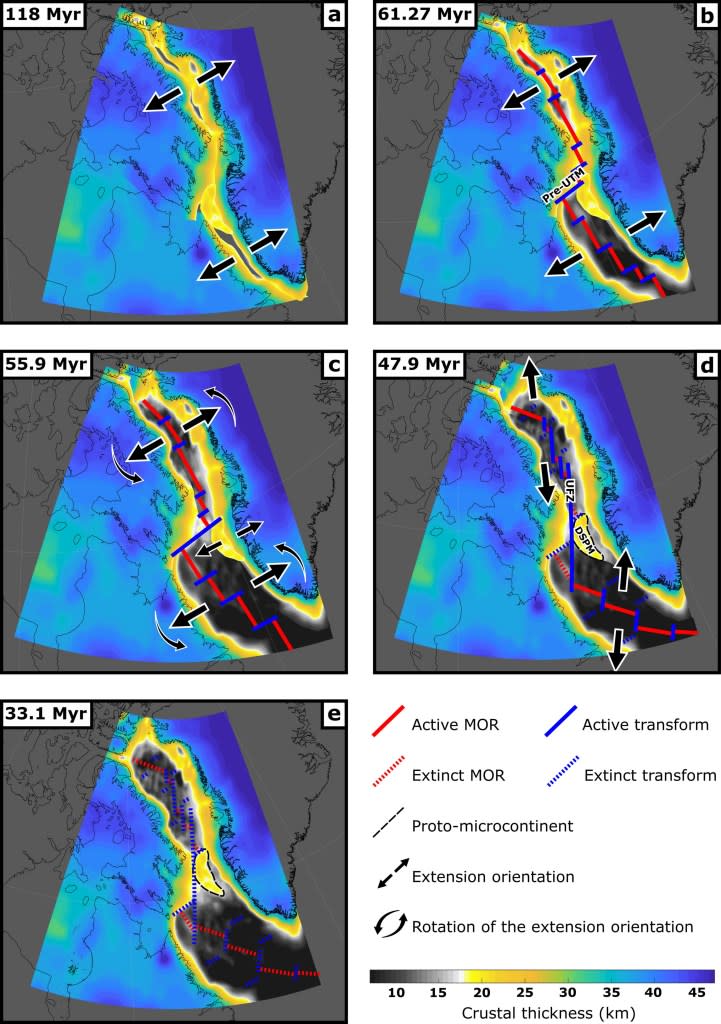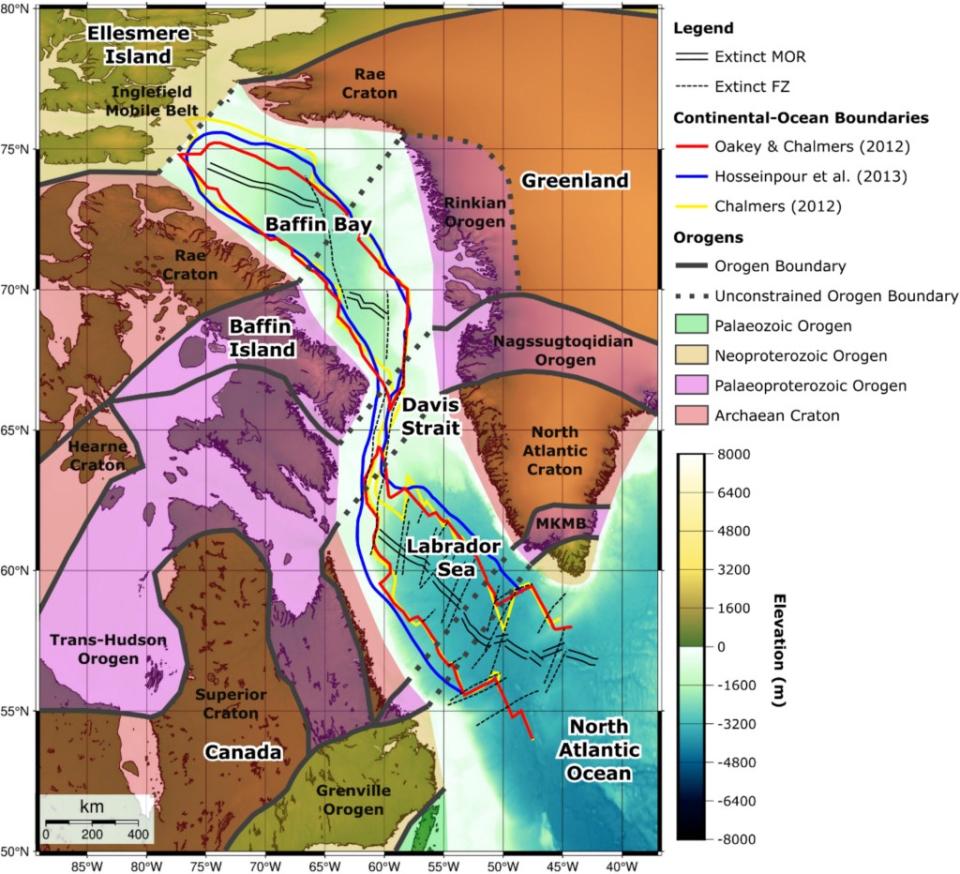Schematic diagram of key events in the Labrador Sea, Baffin Bay, and Davis Strait.
Researchers from the University of Derby looked into the break-up of the European and North American over time and the geological process behind it, and they found that the break-up is still ongoing.
Dr. Jordan Phethean, lead author of the study, explained to Earth.com that “the North America and Eurasian tectonic plates have not yet actually broken apart, as is traditionally thought to have happened 52 million years ago.”

Iceland was the focus of the study since the volcanic island is thought to have formed around 60 million years ago due to the mid-Atlantic ridge.
He said that these tectonic plates “are, in fact, still stretching and in the process of breaking apart” and are not yet separate entities.
Therefore, the paper’s authors argued, North America and Europe could be seen as a single continent rather than two separate ones.
Iceland was the focus of the study since the volcanic island is thought to have formed around 60 million years ago due to the mid-Atlantic ridge. The outlet noted that this particular tectonic boundary — formed by the North American and Eurasian plates — has long been thought to have created the island with the emergence of a hot mantle plume.

The proposed plate tectonic model in GPlates overlain with the present-day crustal thickness data.
But now, the researchers are positing that Iceland and the Greenland Iceland Faroes Ridge (GIFR) has geological fragments from both the European and North American tectonic plates, suggesting that they are connected pieces and not isolated.
To describe this phenomenon, the scientists coined the term “Rifted Oceanic Magmatic Plateau” (ROMP).
If their findings are proven to be true, it would mean that the tectonic plates of the European and North American continents are still in the process of breaking apart, leaving the world with six continents rather than seven.

Map of the Northwest Atlantic.
Phethean knows the study is going to be controversial, but he stands by the research.
“It is controversial to suggest that the GIFR contains a large amount of continental crust within it and that the European and North American tectonic plates have perhaps not yet officially broken up,” he admitted.
However, the research is still in the conceptual phase, and the team of researchers hope to conduct more tests on Iceland’s volcanic rocks to get more concrete evidence of an ancient continental crust.
Source link : http://www.bing.com/news/apiclick.aspx?ref=FexRss&aid=&tid=66b4628b7f9b4bb68c6628d2bd584ee0&url=https%3A%2F%2Fwww.yahoo.com%2Fnews%2Fnorth-america-europe-classified-one-180330402.html&c=566100423903070861&mkt=en-us
Author :
Publish date : 2024-08-07 07:03:00
Copyright for syndicated content belongs to the linked Source.











